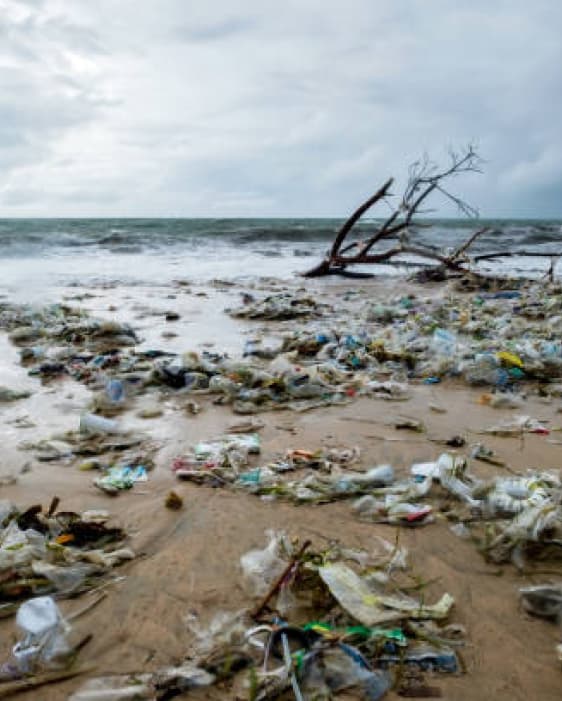Emulates and out performs traditional jet fuel made from fossil fuel, while protecting the environment
The Avioxx process achieves the economic production of fuels which emulate those fossil-derived fuels currently used today. We're not just reducing the net carbon output of air travel to zero, with our advanced technology we're also re-using waste hydrocarbons such as agricultural sludge, plastics, and other organic matter. Reusing these hydrocarbons also allows us to reduce the cost of the fuel.
The process is in two parts, which are integrated into an optimised system with minimum waste of energy and materials. The first part involves the breaking down of wastes to yield electrolytic hydrogen and carbon oxide gases, plus electricity. This process involves the application of three technologies, viz: gasification, fuel cells, and electrolysis, and is the subject of patent GB2431511.
The second part takes these products and converts them into long-chain molecules using a well-established process known as the Fischer-Tropsch reaction.
This, together with the use of other standard oil-refinery processes, enables the hydrocarbon composition of the final product to be fine-tuned to emulate the standard jet fuel it replaces. The conversion uses various processes and relies on green hydrogen with the capture of carbon dioxides.
Our fuel is tested thoroughly and undergoes comprehensive licensing approvals to meet global standards .
Green Jet Fuel Production, Lowering Carbon Emissions and Resource Conservation
Target production per annum
Carbon savings per year
Plastic bottles not incinerated
Air miles
Electrolytic Hydrogen creates the high energy fuel
The creation of a high-energy fuel involves the addition of a great deal of energy. This energy is partly derived from the waste material feedstock itself via the production of electrolytic hydrogen. However, depending on the properties of the waste, additional energy input may be required, and this is done by the supply of additional green electricity to the electrolyser.
A great deal of research and modelling has been carried out to determine the yields of hydrogen, power, and carbon oxides from the different materials available. This knowledge has enabled the performance of the fully integrated two-part Avioxx process to be determined and the optimal design to be achieved. Dynamic management is facilitated through machine learning, and processing flexibility allows significant optimisation of the process for generating the fuel.
We have built up a library of computer models representing the processing of materials, including wastes, into certified sustainable aviation fuels (SAFs). These models enable us to predict the yields achievable from the wide variety of wastes available, and to operate the control systems to achieve optimum performance at all times. For example, we can use our AI and machine learning expertise to ensure our processes adjust automatically to the different waste feedstocks and electricity prices in real time.
